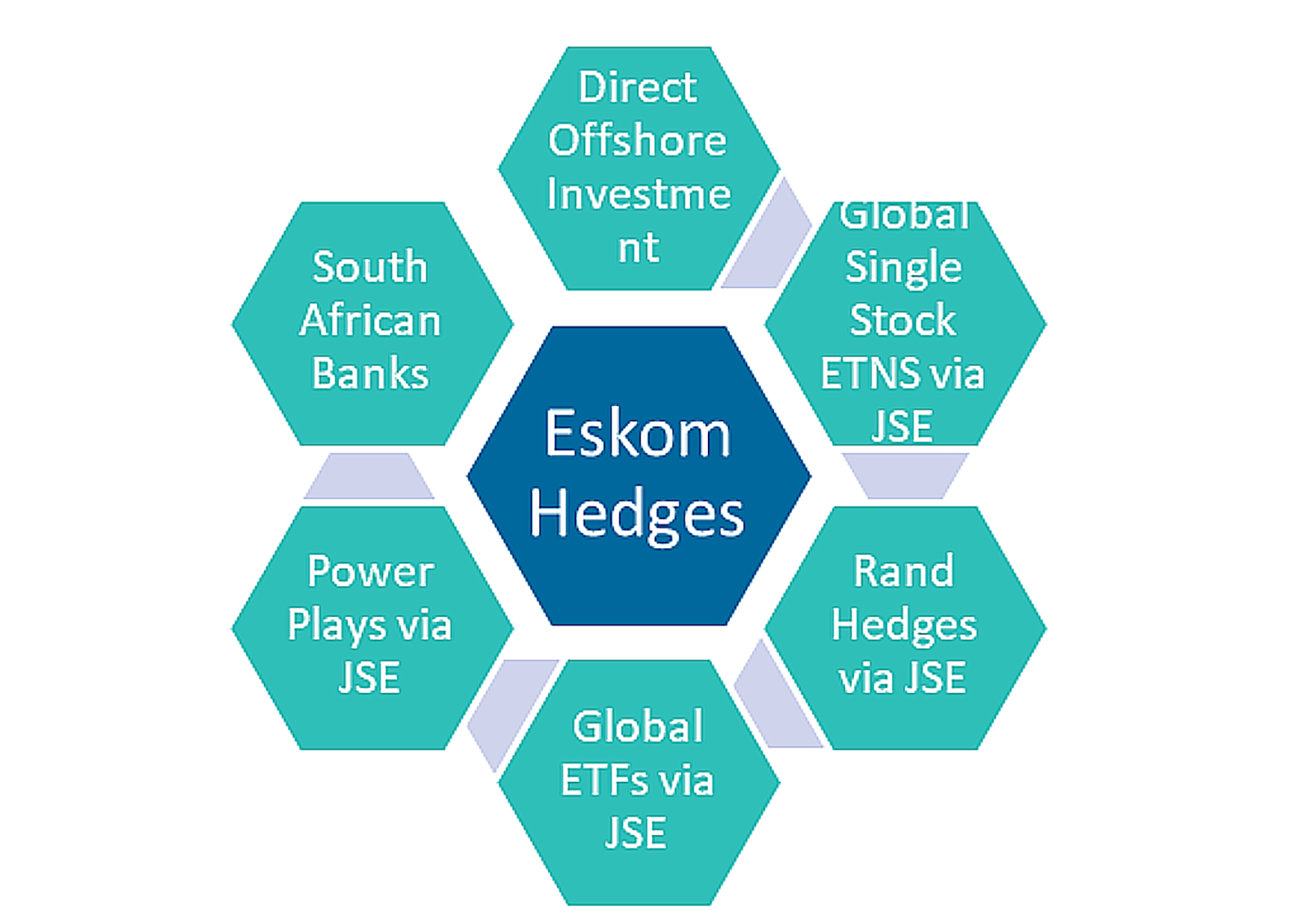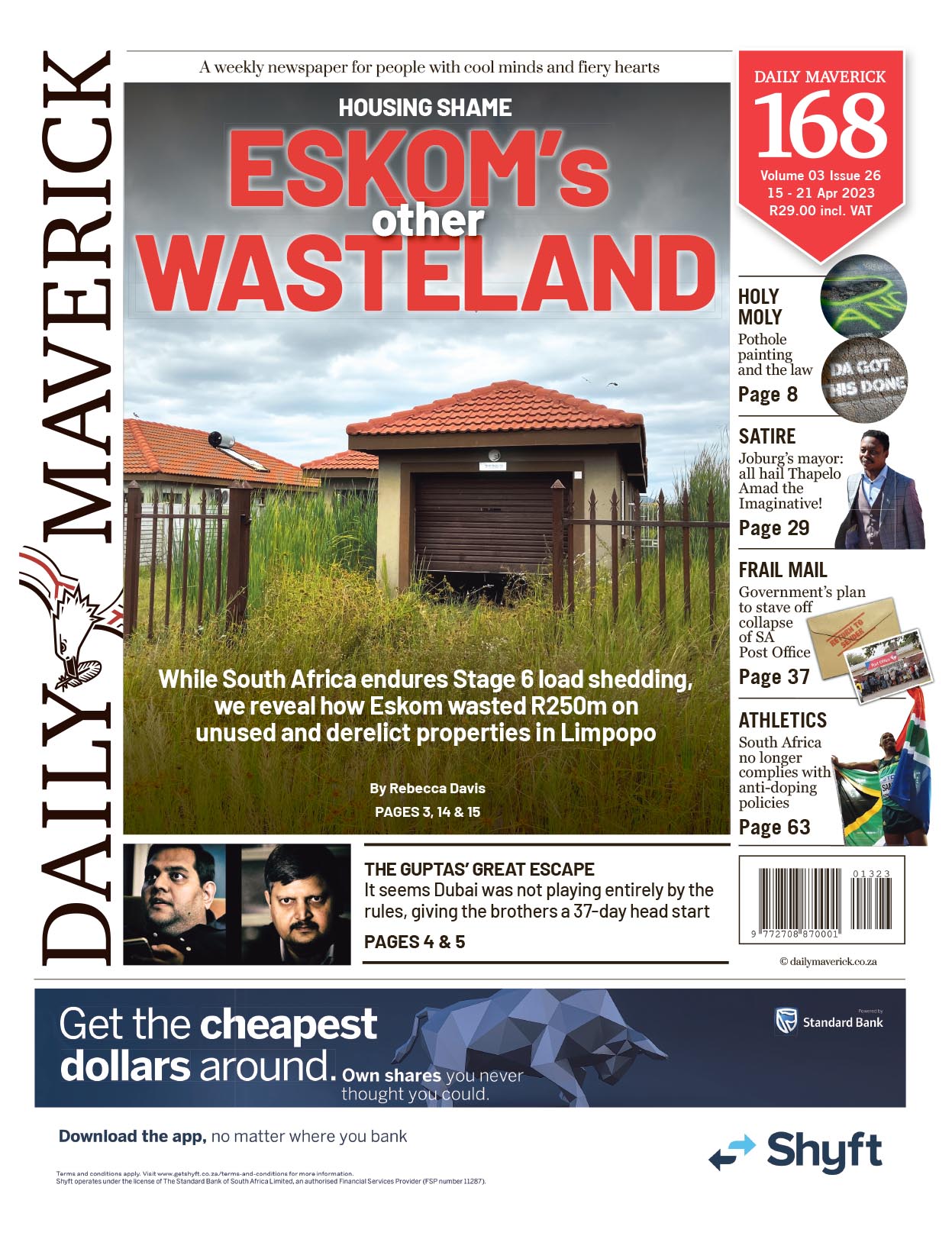PERSONAL FINANCE
How to protect your investment portfolio from Eskom’s power crisis

With parts of the Western Cape already experiencing temperatures as low as 9°C, the new Electricity Minister, Kgosientsho Ramokgopa, has warned the country to brace for possible Stage 10 blackouts this winter as energy use ramps up.
The Daily Investor reports that Electricity Minister Kgosientsho Ramokgopa told journalists a week ago that the gap between Eskom’s energy availability factor (EAF) and energy demand significantly widens in winter, when the average demand is around 35,000MW, peaking at 37,000MW.
Ramokgopa says with a guaranteed supply of 27,000MW, South Africa is facing a shortfall of between 8,000MW and 10,000MW during winter, which translates into stages eight to 10 blackouts.
The good news is that despite the dire warning, there are ways you can batten the hatches on your investment portfolio to prevent “wealth shedding” in the years ahead.
Michele Santangelo, portfolio manager at Independent Securities, says you can protect your investment portfolio from load shedding by investing in shares that have shown resilience in the face of the energy crisis.
“Whether businesses are impacted directly by not being able to operate a business or through second-order effects like inflation, the impact of load shedding is devastating. Investors cannot ignore this and need to position investment portfolios to protect against Eskom and grow their investments at a reasonable rate to protect their long-term purchasing power,” he says.
Dirk Jooste, a fund manager at PSG Asset Management, notes that although the energy crisis is acute, “necessity is the mother of invention, and we are starting to see a highly creative response from the private sector (households and corporates) in the form of non-Eskom dependent solutions which are only starting to accelerate now.
“It is to be expected in this challenging environment that investors are focused on the negative, and extreme narratives like a complete grid collapse are a testament to this. The odds of a more normal scenario should also be considered. It is not unfathomable that the private sector could build energy solutions equal to 15% or more of total grid capacity in the next three to five years, significantly reducing the need for load shedding,” he says.
David Lerche, chief investment officer at Sanlam Private Wealth, says the biggest problem is that the higher levels of load shedding translate into increased costs.
“Larger manufacturers are typically located at national key points where they are immune from load shedding, but this isn’t always the case for smaller players. Cell phone operators, which have thousands of towers all over the country, don’t have the same protection and must rely on a combination of batteries and diesel generation.
“In general, capital-intensive businesses like these have wider profit margins, so the incremental costs don’t impact a particularly large proportion of profits,” he explains, adding that although retailers don’t make their own products, they are taking a hit because they need electricity to trade. Food and grocery retailers need electricity not only to keep the lights on and the credit card machines working, but the fridges and bakeries also consume a lot of power.
“Shoprite, the most profitable of the South African grocers, had an operating profit margin (after leases) of only 4.3% in the year to June 2022. So, the additional impact of running generators hurts. Shoprite’s six-month results to December 2022 indicated the trading margin had fallen despite excellent revenue growth. Finally, service businesses experience the least pain. While it costs a lot to keep offices illuminated, this expenditure is relatively small compared to the ‘people’ costs of running a bank or insurer,” Lerche says.
Jooste adds that when you buy quality assets at depressed prices, you have the best chance of long-term outperformance.
“Conversely, overpaying for assets – even if they are great companies – handicaps your ability to deliver outperformance in the long run. The key when it comes to investing in a risky asset is ensuring risks (and potential surprises to the upside) are identified correctly, focusing on the price paid, and constructing portfolios in such a way that they benefit from diverse drivers of return and deliver sustained performance,” he advises.
Santangelo says there are five ways to hedge against the “Eskom risk”. These include global single stock exchange-traded notes (ETNs), global exchange-traded funds (ETFs) and rand hedges via the JSE, as well as direct offshore investments and investing in South African banks.
Five hedges against Eskom risk
Direct offshore investment: Santangelo says this would involve moving capital directly from South Africa to an offshore investment account where you can then invest in various global investments, including shares, bonds and real estate. You will have to use your single discretionary allowance (R1-million a year) or your foreign investment allowance (up to R10-million a year) to move funds abroad.
Global ETFs via the JSE: These ETFs provide foreign exposure to various developed and emerging global markets. Investments into global sectors such as technology, healthcare and real estate, as well as themes like ESG and infrastructure, are easily accessible via a JSE stockbroking account.
Global single-stock ETNs via the JSE: You can invest indirectly into foreign-denominated instruments through the JSE via exchange-traded notes (ETNs). A variety of globally focused ETNs will give you exposure to the price movement of a handful of mega capitalisation shares that are listed on the US stock market, such as Apple, Amazon, Coke, Netflix, Berkshire, Tesla and Visa.
Rand hedges: This would mean investing in companies that derive most, if not all, of their revenue and earnings from global operations. A well-diversified portfolio of quality stocks can be constructed within the rand hedge theme. Companies that stand out are global tobacco giant British American Tobacco and luxury goods company Richemont.
“Within the food services sector, Bidcorp operates in more than 20 countries and continues to provide long-term stable growth. Technology giant Prosus derives most of its value from high-growth investee companies in emerging markets, particularly China. These companies will have their idiosyncratic risks, but Eskom is not one of them,” Santangelo says.
He says good listed property options would be those companies that are locally listed but only own properties in Europe.
“These include Sirius, Mas Plc and NEPI Rockcastle. Each of these companies boasts an attractive dividend yield in prime currencies without their properties being subjected to load shedding,” he says.
South African banks: All four of the big banks are reaping the benefits of increasing investment and financing requirements as corporates, industry and individuals look to move off the Eskom grid. For example, Nedbank has issued renewable energy bonds where the proceeds from the bonds are used to help finance solar and wind projects. The bank is also actively providing loans to large industrial companies that are self-generating or supplementing their electricity needs with renewable energy.
“The five investment types outlined above are all defensive plays that avoid load shedding risks. There are, however, offensive options where you can invest in companies that will benefit from solutions to the energy shortage,” Santangelo says.
A prime example is Reunert, which provides end-to-end renewable energy and storage solutions for households and commercial customers through different divisions within its applied electronics segment.
Santangelo adds that Reunert has a compelling investment proposition as it benefits from both load shedding and the structural push into renewable energy. DM168
This story first appeared in our weekly Daily Maverick 168 newspaper, which is available countrywide for R25.





















 Become an Insider
Become an Insider
“It is not unfathomable that the private sector could build energy solutions equal to 15% or more of total grid capacity in the next three to five years, significantly reducing the need for load shedding,” he says.”
I believe that is exactly what will happen. Waiting for this ANC government to do anything is a waste of time. But the private sector solution has its own dangers. 1. That 15% that Eskom will lose will be its best payers, bringing the viability and sustainability of Eskom even more into question
2. Once that 15% is operational, and total demand has dropped by 15%, there is even less incentive for Eskom to make the right decisions and make the right moves, resulting in a continual downward spiral. Current energy availability factors of 50% to 55% will drop precipitously in that scenario.